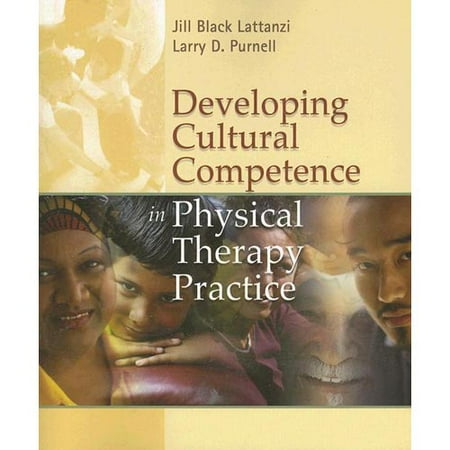Developing Cultural Competence In Physical Therapy Practice Pdf
Cap program theft. The renowned Purnell Model for Cultural Competence serves as the organizing framework for understanding culture and making it applicable to the field of physical therapy. Part I addresses the basic concepts and definitions of culture and leads students toward a better understanding of their own culture as a springboard for considering how care can be culturally appropriate for patients. Part II features culture-specific information from contributors who are physical therapy experts on various culturally diverse patient populations. The text explores disposition to bias toward others as a way to develop care that is both sensitive and effective. Jill Black Lattanzi uses the renowned 'Purnell Model for Cultural Competence' as an organizing framework for her text, taking a tried and true approach to the understanding of culture and making it applicable to the field of physical therapy. Part 1 addresses the basic concepts and definitions of culture and leads students toward a better understanding of their own culture as a springboard for considering how care can be culturally appropriate for patients. Part 2 features culture-specific information from contributors who are physical therapy experts of various culturally diverse patient populations.
The text aims to get students and clinicians to recognize that they are predisposed to having a bias toward others on the way to developing care that is both sensitive and effective. Introducing cultural concepts p.
Developing Cultural Competence in Physical Therapy Practice Black Lattanzi JF, Purnell LD. Philadelphia, PA 19103, FA Davis Co, 2005, paperback, 444 pp, illus, ISBN: 0-8036-1195-1, $36.95. Cultural competency establishes a foundation of mutual respect and understanding, which in turn allows patients and practitioners to communicate. Developing cultural competence in physical therapy practice Download developing cultural competence in physical therapy practice or read online here in PDF or EPUB. Please click button to get developing cultural competence in physical therapy practice book now. Using a traditional framework for developing core competencies in physical therapist and physical therapist assistant education, the task force and committee identified knowledge, attitudes, and skills necessary to develop as a culturally competent physical therapy practitioner.
2 Introducing steps to cultural study and cultural competence p. 21 Exploring cultural heritage p. 38 Exploring communication in cultural context p. 52 Exploring family roles and organization within culture p. 69 Exploring cultural workforce issues p.
84 Exploring high-risk health behaviors, biocultural ecology, and nutrition in light of culture p. 99 Exploring spirituality and cultural death rituals p.
122 Exploring cultural healthcare practices and roles of healthcare practitioners p. 136 Cultural considerations for the African American / black cultures p. 162 Cultural considerations for the Chinese culture p. 179 Cultural considerations for the Latino/hispanic client p.
208 Cultural considerations for American Indian cultures p. 238 Cultural considerations for Middle Eastern cultures p. 260 Cultural considerations for Jewish clients p. 276 Disability across cultures p. 291 Veteran and military culture and physical therapy p. 313 The challenge and culture of poverty and homelessness p. 333 Physical therapy cultural encounters in pediatrics p.
Veronica Jackson

Karolinska Institutet
344 Physical therapy cultural encounters in geriatrics p. 361 Establishing a culturally competent practice p. 381 The nurturing of cultural competence p. 395 Table of Contents provided by Blackwell.
All Rights Reserved. This information is provided by a service that aggregates data from review sources and other sources that are often consulted by libraries, and readers. The University does not edit this information and merely includes it as a convenience for users.
It does not warrant that reviews are accurate. As with any review users should approach reviews critically and where deemed necessary should consult multiple review sources. Any concerns or questions about particular reviews should be directed to the reviewer and/or publisher.